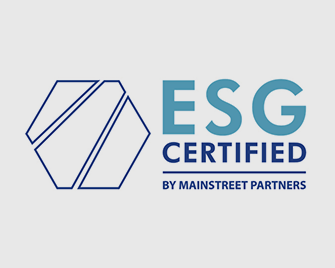The Sub-Fund pursues the objective of reducing carbon emission exposure in order to achieve climate change mitigation, consistently with the long-term temperature goal of the Paris Agreement. Taking into account the GHG intensity of investee companies (total scope 1+2 in tCO2eq/EURm) in the last 3-5 years as well as their forward-looking emission reduction targets, the portfolio manager will aim to maximise the net reduction of GHG intensity of the overall portfolio.
The Sub-Fund invests in securities of issuers established in Europe with a long/short equity strategy. The investable universe for the long part of the portfolio is made of all securities issued by such issuers with the exclusions described above. In addition, consistently with the sustainable investment objective of the Sub-Fund, companies with the worst 5% GHG Intensity (total scope 1+2 in tCO2eq/EURm) are excluded, as well as other companies based on the sectorial criteria described in the following sections.
The internal model adopted by the Management Company assigns an ESG score to each company in the investable universe taking into account their GHG Intensity (total scope 1+2 in tCO2eq/EURm) in absolute value and the trend of such indicator, the PAIs quoted above as well as other ESG indicators, e.g. executive compensation linked to ESG, women in workforce, employee turnover, independent board members, etc. Companies with the worst 10% ESG scores within each industry sector will not be invested in.
The investable universe for the short part of the portfolio is made of all securities issued by European issuers with a focus and medium and large cap companies. Companies with the best 10% ESG scores assigned as described above within each industry sector cannot be shorted.
The sustainable investments that the Sub-Fund intends to make are considered not to cause significant harm to any environmental or social sustainable investment objective as the Management Company takes into account all PAIs disclosed in Table 1 as well as any relevant ones from Tables 2 and 3 of Annex I of the Commission Delegated Regulation (EU) 2022/1288. The Management Company verifies the respect of the OECD Guidelines for Multinational Enterprises and the UN Guiding Principles on Business and Human Rights, including the principles and rights set out in the eight fundamental conventions identified in the Declaration of the International Labour Organisation on Fundamental Principles and Rights at Work and the International Bill of Human Rights.
Compliance with the DNSH principle is verified at the time of the investment and subsequently monitored.
In case of worsening of the indicators or the occurrence of a negative event, the Management Company may, considering the interest of the investors, engage directly or collectively the issuer and/or reduce the size of the investment.
The process of integrating ESG factors is based on data extracted from sustainability reports and from the external data providers. If deemed appropriate, the SGR prepares specific engagement activities with the Issuers for the verification and integration of missing data.
No adequate EU Climate Transition Benchmark or EU Paris-aligned Benchmark as qualified in accordance with Regulation (EU) 2016/1011 is available due to the long/short strategy adopted by the Sub-Fund; therefore, the Management Company has adopted an internal model to ensure the attainment of the Sustainable Investment objective.

